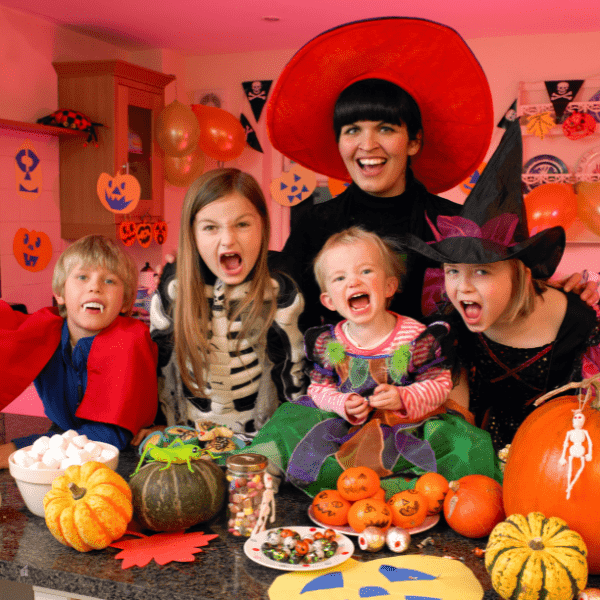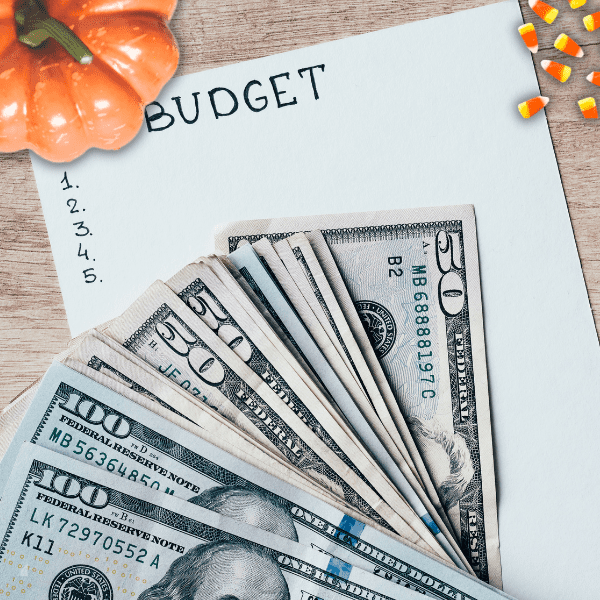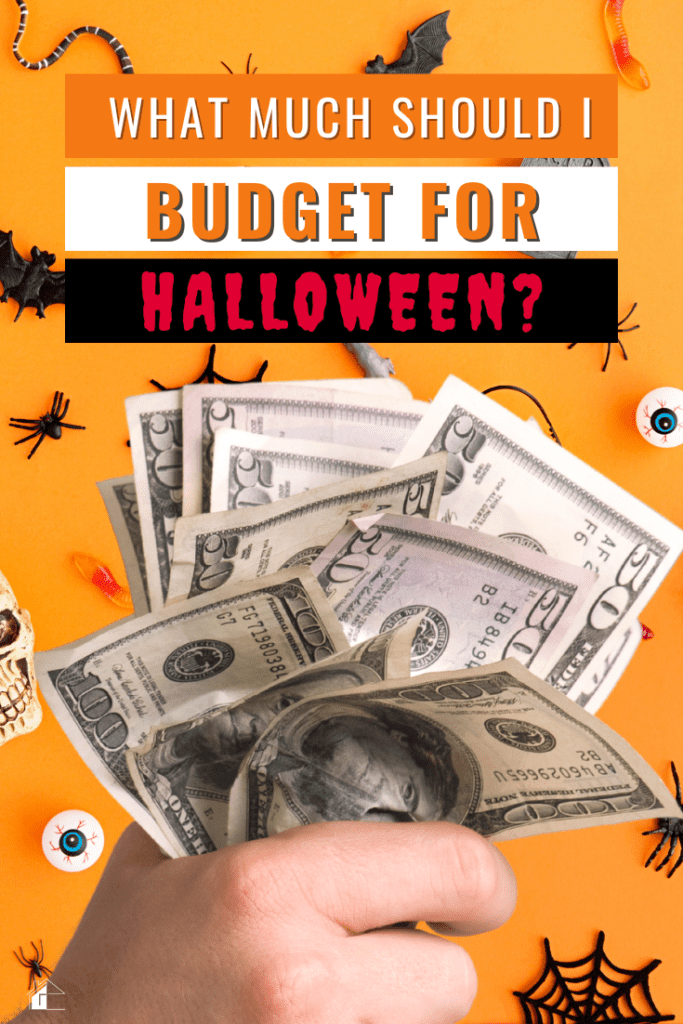How Much Should I Budget for Halloween in 2025?
This post may contain affiliate links which might earn us money. Please read my Disclosure and Privacy policies hereHalloween is one of the most exciting times of the year, but without careful planning, the costs can add up quickly. In 2025, U.S. consumers are expected to spend about $11.7 billion on costumes, candy, decorations, and parties.
The average household is planning between $104 and $220, depending on family size and how they celebrate. With tariffs and inflation raising the cost of candy and imported costumes, setting a budget helps families enjoy the holiday without financial stress.

How Much Will the Average Person Spend on Halloween in 2025?
[Insert image here]
Families are budgeting more carefully this year, but spending remains strong. Here’s a look at the most common categories:
- Candy: $32–$35 per household. Buying in bulk can save close to 37% compared to smaller packs.
- Costumes: $36–$40 on average, though budget options can be as low as $23 and premium costumes can reach $90.
- Decorations: $35–$50, with higher spending for families who enjoy going all-out.
- Pumpkin supplies: $10–$30.
When you combine these categories, households typically spend $210 to $505 if they are also hosting parties.
Note: These numbers are averages drawn from national surveys and retail reports. We’ve adapted them into a household budget range so you can see how much to set aside in each category.
How Much Does It Cost to Throw a Halloween Party?
A party can quickly add to your Halloween budget. Typical 2025 costs include:
Venue: Hosting at home costs nothing, while renting a space ranges from $100 to $1,000.. Having your guests bring themed dishes not only adds variety but also cuts down your food costs.
Decorations: $50–$200, depending on how elaborate you want your home to look.
Food and drinks: $120–$500. Tariffs on sugar and chocolate are making themed treats more expensive this year, so potluck-style parties are a smart way to cut costs.
Entertainment: Free if you use your own playlist, or $200–$1,000 if you hire a DJ, band, or other entertainment.

Is More Money Spent on Halloween Than Christmas?
Halloween continues to grow, but it still trails far behind Christmas. In 2023, Halloween spending hit a record $12.2 billion. For 2025, projections place it closer to $11.7 billion, a slight dip from that peak but still one of the largest consumer events of the fall season. While the totals don’t come close to Christmas, which reached nearly $960 billion last year, Halloween continues to hold strong as a major spending holiday.
Christmas spending tends to focus on gifts, while Halloween dollars go toward candy, costumes, and decorations. Even though the scale is very different, Halloween has become one of the most celebrated holidays in the U.S.

How Do You Budget for Halloween?
Creating a Halloween budget is simpler than it might seem, even in 2025 when prices are higher and tariffs have made candy and costumes more expensive. The key is to prioritize what matters most to your family and plan around that. Here’s a step-by-step way to keep costs under control while still enjoying the fun.
1. Identify and prioritize expenses
Start by making a list of everything you want for Halloween. The most common categories are:
- Candy: Still a must if you’re expecting trick-or-treaters. Candy prices have climbed in 2025, averaging $32–$35 per household, so buying in bulk early can save money.
- Costumes: For yourself, kids, or the whole family. Costumes remain one of the largest expenses, averaging $36–$40 per person, but thrift finds and DIY options can bring this down.
- Decorations: From pumpkins and cobwebs to lights and inflatables, decorations typically cost $35–$50. Think about how much you want your home to stand out.
- Parties: If you’re hosting, budget for food, drinks, and entertainment. Costs can range widely, so it’s important to decide in advance.
- Pumpkin carving supplies: Carving tools and pumpkins run about $10–$30, depending on how many you buy.
Once you’ve listed your categories, decide what’s most important. For some families, costumes are the priority. For others, it’s hosting a party or going big on decorations.
2. Save money with DIY
One of the easiest ways to trim your Halloween spending is by doing some things yourself. Not only is DIY often cheaper, but it makes your holiday unique:
- Costumes: Raid your closet, visit thrift stores, or repurpose last year’s costume with small upgrades. DIY options often cost less than half of store-bought ones.
- Decorations: Homemade decorations like cardboard tombstones, tissue paper ghosts, or painted jars for lanterns are inexpensive but still create a spooky atmosphere.
- Party food: Make homemade treats instead of buying everything premade. A tray of themed cupcakes or a simple “witch’s brew” punch costs less when made at home.
3. Stretch your budget further
With higher prices in 2025, stretching your dollars makes a big difference:
- Shop sales and discounts: Start shopping in September, before demand pushes prices higher. Nearly half of Halloween shoppers begin before October.
- Buy in bulk: Candy is significantly cheaper when purchased in bulk packs at warehouse stores.
- Reuse decorations: Durable decorations like string lights or plastic pumpkins can last several years. Store them carefully and bring them out again next year.
4. Track your spending
It’s easy to overspend when picking up little things here and there. Use a budgeting app or a simple spreadsheet to record your purchases. Seeing the totals in front of you helps you stay on track.
5. Post-Halloween savings tips
Halloween doesn’t end on October 31 when you’re trying to save money. Smart families think ahead to next year:
Plan for next year: Shop clearance sales right after Halloween. You’ll find costumes, décor, and candy marked down by 50% or more, which can cut your 2026 budget in half.g.
Leftover candy: Freeze it for baking, store it in airtight containers, or donate it to local organizations.
Store decorations properly: Pack decorations carefully in bins so they last multiple years.
How Can You Save Money on Halloween?
Saving money on Halloween is all about being resourceful. Here are a few additional ways to cut costs:
- DIY Costumes and Decorations: Homemade costumes and decorations are cheaper and often more fun to make. Get creative with items you already own or buy inexpensive materials from thrift stores or dollar stores.
- Buy Candy in Bulk: Purchasing large bags of candy from wholesale stores like Costco or Sam’s Club can save money, especially if you expect a lot of trick-or-treaters.
- Reuse and Repurpose: Save costumes and decorations from previous years to avoid buying new ones every Halloween. Even simple costume additions or repurposed decorations can give your home a refreshed look without a hefty price tag.
- Host a Potluck: Hosting a party? Ask guests to contribute a dish or drinks. This will help lower the overall cost of food while also adding variety to the menu.
Sample Halloween Budget for 2024
This sample budget is based on 2025 projections and our breakdown of common household expenses. Your actual costs may vary depending on family size, neighborhood, and how much you reuse from year to year.
| Expense | Estimated Cost (2025) |
|---|---|
| Costumes (per person) | $36 – $40 (DIY can cut to $20) |
| Candy | $32 – $35 (bulk saves more) |
| Decorations | $35 – $50 |
| Pumpkin Supplies | $10 – $30 |
| Halloween Party | $120 – $350 |
| Total | $210 – $505 |

Conclusion
Halloween is fun, festive, and a chance to make memories without overspending. By planning ahead, setting limits in each spending category, and leaning on strategies like early shopping, DIY, and bulk buying, you can celebrate without financial fright. These numbers are estimates meant to help you plan, not exact rules. Use them as a starting point and adjust them for your own family’s traditions and budget priorities.
Sources
RetailNext: 2025 Halloween Retail Trends
National Retail Federation: Halloween Spending Trends









